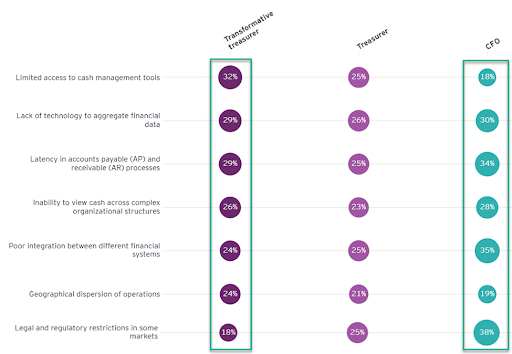
There are important distinctions in how CFOs and Treasurers approach company finances. Yet, at the end of the day, the CFO bears ultimate responsibility for safeguarding the financial health of the organization and ensuring that systems are in place to provide early warnings to management and the board.
This raises a fundamental question: what truly matters most? Is it the ability to deliver accurate financial reporting, to build a high-performing FP&A team, or to stay closely aligned with sales and monitor business conditions in real time?
Traditionally, finance teams have concentrated on accounting, management reporting, and operational support. However, when it comes to the "going concern" principle—the company's ability to sustain itself over time—the focus must shift to identifying and addressing the underlying factors that determine long-term financial viability.
The top reasons for "going concern" warnings are:
Poor Cash Flow Management & Liquidity Issues - Companies run out of working capital, even when profitable on paper. Delayed receivables, excessive debt servicing, and mismatched inflows/outflows cause insolvency.
Excessive Leverage & Unsustainable Debt - Borrowing aggressively without sufficient earnings to service debt. Vulnerability to interest rate increases or credit tightening.
Operational Inefficiencies & Cost Overruns - Rising labor, production, or supply chain costs not matched by revenue growth. Lack of efficiency in scaling operations.
Decline in Revenue Due to Market Shifts - Losing competitiveness from technological disruption, new entrants, or changing customer behavior. Overreliance on a narrow customer base or a single product line.
Weak Risk Management & External Shocks - Failure to anticipate risks such as lawsuits, regulatory fines, commodity price swings, or macroeconomic downturns. Pandemics, geopolitical instability, or cyberattacks can push fragile firms over the edge.
As you can see from the above, deteriorating business conditions are rarely the culprit. Leverage and cash flow management are the real villains in this story. But then you would think cash flow management should be the top priority—reality is it is not.
CFO's and finance folks (your truly being one of them "finance folks") have mostly been focused on the integrity of financial statements, accrual-based FP&A forecasts and better real time reporting on billings and bookings. Here is a survey done by EY on relative priorities by both cohorts, treasurers and CFO's:

Source: EY CFO Agenda DNA Treasurer Survey*
CFO priorities show regulatory (audit/reporting burdens), lack of technology for financial data aggregation, the AP/AR process, poor integrations as the top issues they face. My priorities were no different:
- ERP and Accounting Systems
- FP&A and Management Reporting
- Operations
- And then we have cash management, the relative priority can be rated as a "luxury" to "necessary" but never top of the list.
Finance heads are generally known to be the folks who say "No, we can't do this or spend that" but reality is that there is always an element of hope that the cash flows eventually come close to EBITDA or what was forecasted in the FP&A and the gap can be bridged with debt (if one is in such an industry which requires some amount of debt). That dose of hopium is justified in an improving business environment, but not a deteriorating business environment.
When it comes to early warning for 'data' to pinpoint deterioration in business conditions, which systems can really provide those early warning signs? Take your pick:
ERP's & Accounting Systems
- Warning Signals: Declining gross margins, increasing AP aging, delayed collections, abnormal variances between budget vs. actual.
- Modules: AR/AP aging reports, GL close reports, variance analysis.
FP&A & Business Intelligence Systems
- Warning Signals: Forecast-to-actual revenue variances, deteriorating profitability by product/customer, missed sales targets.
Treasury Management / Cash Management Systems
- Warning Signals: Consistently shrinking daily cash position, overdraft reliance, negative liquidity forecasts, rising borrowing needs.
Operational & Supply Chain Systems
- Warning Signals: Rising input costs, delays in procurement, inventory buildup signaling demand slowdown.
Out of the above, which systems do you think provide the earlier warning—accrual-based trends or cash-based trends? I will leave it up to the reader to make their own judgement.
But in the words of Lloyd Blankfein, Goldman Sachs' ex CEO:
“I'm in the risk management business, so I don't take it for granted that I can see 4 inches into the future. I think what we aspire to is less to foresee the future and more to be a great contingency planner”— Lloyd Blankfein, Former CEO, Goldman Sachs